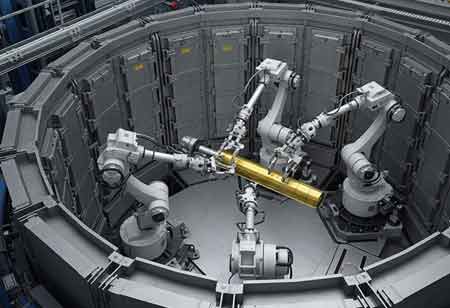CLOSE
Specials
I agree We use cookies on this website to enhance your user experience. By clicking any link on this page you are giving your consent for us to set cookies. More info
Be first to read the latest tech news, Industry Leader's Insights, and CIO interviews of medium and large enterprises exclusively from Energy Tech Review
Thank you for Subscribing
Exploring Breakthroughs in Energy Storage Technologies
Recent breakthroughs in energy storage technology aim to develop efficient, sustainable, and cost-effective solutions.

By
Energy Tech Review | Tuesday, April 08, 2025
Stay ahead of the industry with exclusive feature stories on the top companies, expert insights and the latest news delivered straight to your inbox. Subscribe today.
Companies are making significant strides and are expected to enter the mainstream market, potentially transforming transportation and grid storage applications.
FREMONT, CA: Recent breakthroughs in energy storage technology aim to develop efficient, sustainable, and cost-effective solutions. Solid-state batteries, utilizing solid electrolytes, have achieved higher energy density, safety, and longevity than traditional lithium-ion technology. Overheating issues are also avoided, which would otherwise lead to the risk of fires and explosions associated with traditional lithium-ion technology. This is significant in balancing supply and demand from renewable energy sources.
Solid-state batteries promise to revolutionize energy storage, particularly in electric vehicles (EVs) and portable electronics. They offer higher energy capacity, faster charging times, and longer lifespans than conventional batteries. Flow batteries are another innovative technology that is making waves in the energy storage industry. The design allows for scalable energy storage, as increasing storage capacity is as simple as expanding the size of the tanks. Flow batteries offer long-duration storage solutions, making them ideal for grid applications. The technology is a promising solution for long-term, large-scale energy storage, particularly with renewable energy sources.
Gravity energy storage is a novel concept that leverages gravitational potential energy to store and release electricity. The technology involves using excess energy to lift heavy objects, such as large blocks or water, to a higher elevation. When energy is needed, the object is lowered, and the gravitational force is converted back into electricity, typically through a generator. Companies are pioneering gravity-based storage systems designed to provide long-duration energy storage with minimal environmental impact. Gravity storage systems offer a durable and low-maintenance alternative to chemical batteries, making them suitable for grid-scale storage in regions with significant renewable energy generation.
Lithium-sulfur (Li-S) batteries are emerging as a promising alternative to lithium-ion technology. It makes them particularly attractive for applications like electric vehicles and aerospace, where weight and size are critical factors. One key advantage of Li-S batteries is their use of sulfur, which is abundant and inexpensive compared to the cobalt used in lithium-ion batteries. It makes Li-S batteries a more sustainable and cost-effective option. Ongoing research addresses these issues, and technological advancements could lead to widespread adoption shortly.
The latest advances in energy storage technology are paving the way for a more sustainable and resilient energy future. From solid-state and lithium-sulfur batteries to flow batteries, hydrogen storage, and gravity energy systems, these innovations address the challenges of integrating renewable energy into the grid and meeting the world’s growing energy demands. As these technologies continue to evolve and scale, they hold the potential to transform the energy landscape, making clean, reliable, and affordable energy accessible to all.

Copyright © 2025 Energy Tech Review. All rights reserved






